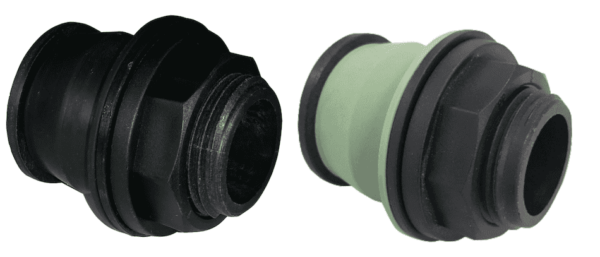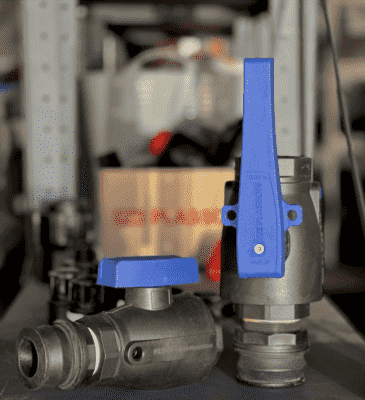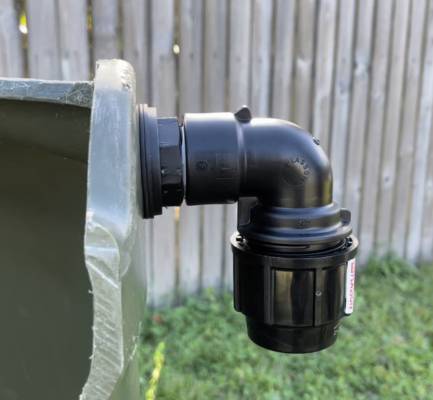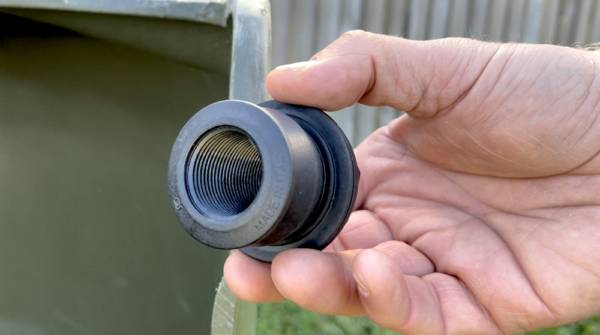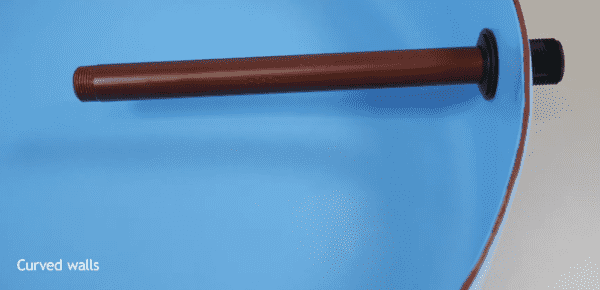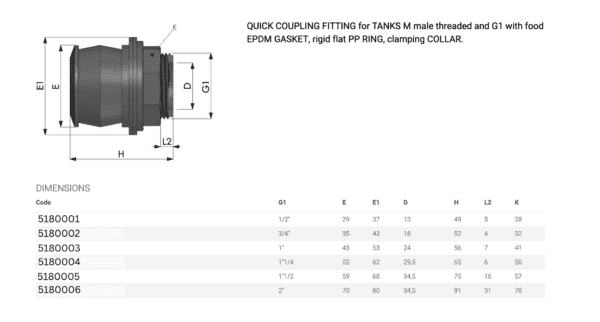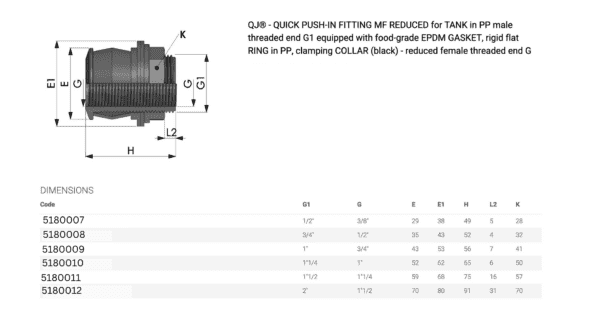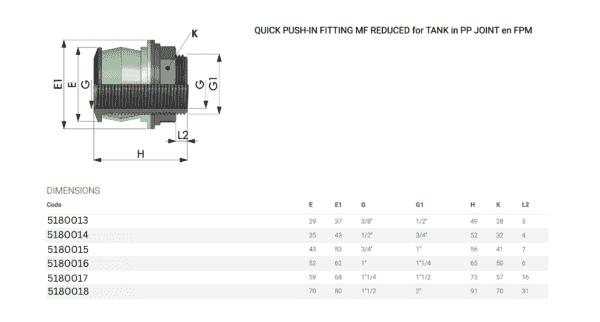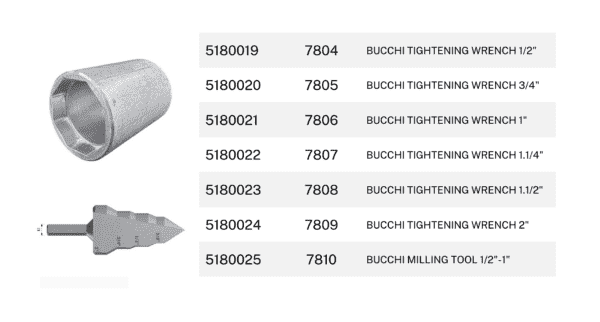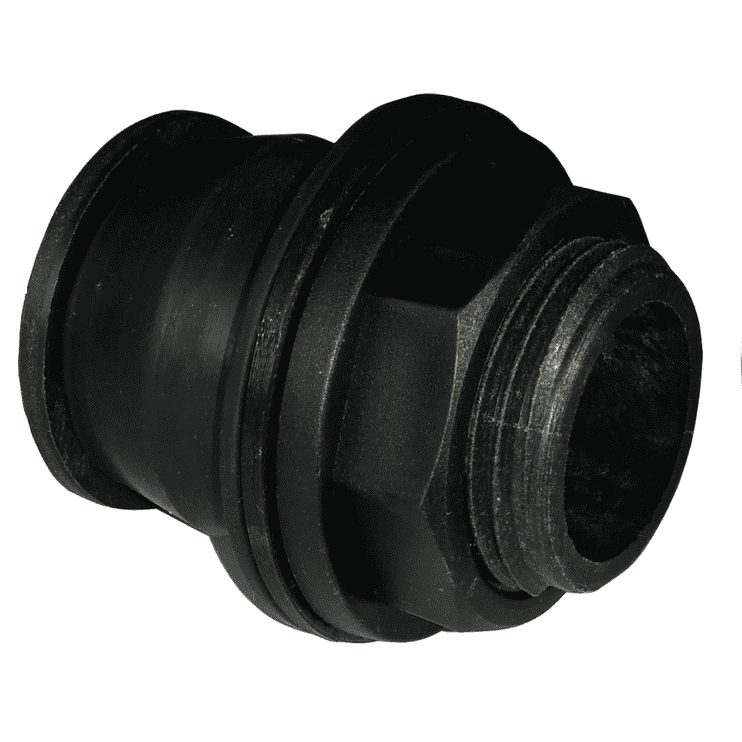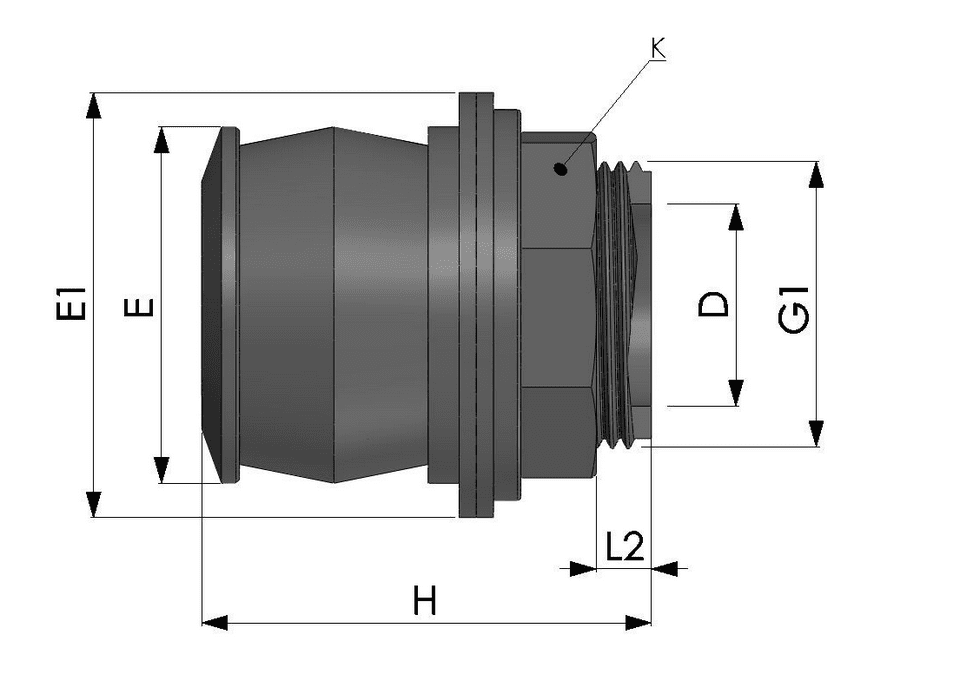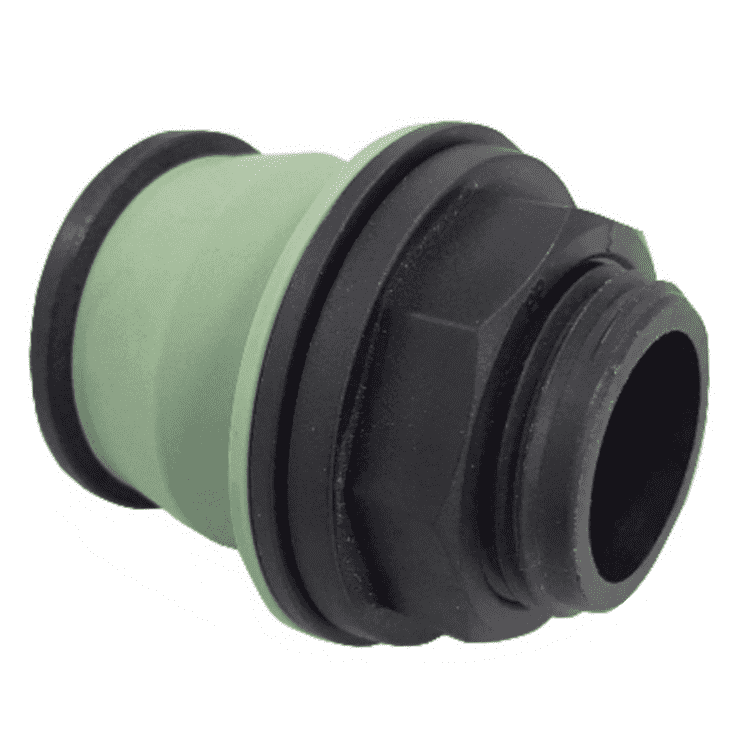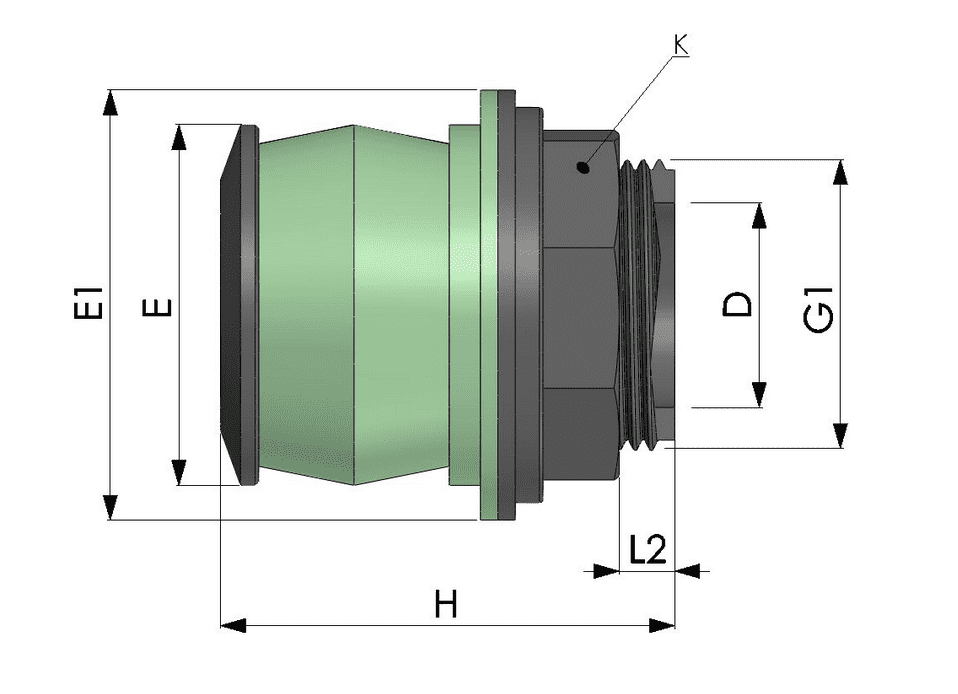BUCCHI QUICK JOINT TANK ADAPTORS
PROUDLY DISTRIBUTED BY PLASSON AUSTRALIA
INSTALL IN SECONDS
WITH ONE PERSON OUTSIDE THE TANK
SOLID CONNECTIONS IN SECONDS EVEN ON CURVED OR UNEVEN WALLS
BUCCHI adaptors fit from the outside so you don’t need access to both sides of the tank wall
Fitting connectors to tanks has always been a time consuming and tricky task. Now you, yes you alone, can fit a connection in seconds!
The QJ® is fitted from the outside of the tank so you don’t need access to both sides of the tank wall.
On tanks with curved or uneven walls, for water, fuel and even aggressive liquids!
PLASSON is proud to offer Australia the BUCCHI Quick Joints range to help get you connected fast and fuss-free.
QJ® is a quick push-in polypropylene (PP) coupling for tanks and containers made PE and IBC containers.
PLASTIC OR STEEL 2MM TO 12MM
BUCCHI’s QJ® fits all plastic or steel tanks designed for storing water, fuels and aggressive liquids, with a thickness between 2 and 12 mm. The special gaskets allow BUCCHI QJ to seal watertight on irregular walls of variable thickness.
The reduced male female version is the ideal solution for inserting rigid internal suction pipes or external taps with a male thread.
The range features sizes 3/8″ up to 2″ with male or female threads.
SEALS ON CURVED TANKS
The techno-polymers and different types of gaskets allow these fittings to be used in the automotive sector, for shaped tanks, for oil and diesel.
Offering excellent resistance to oxidation, ozone, atmospheric agents and ageing in sunlight, QJ fittings can be used on plastic or steel tanks and, thanks to high-performance seals and innovative engineering, they don’t need maintenance.
They are resistant to temperatures, stress, vibrations, corrosion and weather conditions and guarantee a hydraulic seal up to 4 bar!
THE ENGINEERING BEHIND A TANK CONNECTOR THAT CAN BE INSTALLED BY ONE PERSON IN SECONDS
Fitting tank connections is a fiddly, frustrating job usually requiring two people and exceptional hand-eye co-ordination but a clever Italian company is changing all that.
BUCCHI have spent years perfecting a tank connector design, called Quick Joints or QJ. Quick Joints can be installed in tank walls from the outside, without the need for welding, sealants or locknuts, and installation can be done by one person in a matter of seconds.

For over 40 years BUCCHI have developed fittings for farming, gardening, heating and air-conditioning. The quality of their seals is paramount so BUCCHI produce high-tech elastomer seals designed to handle dynamic movement and significant elastic deformations without changing original shape.
Dr. Anna Valentini, Head of Laboratory and Quality Control of BUCCHI, explains:
NBR
A copolymer of butadiene and acrylonitrile that is used for most seal applications for conventional fluids. NBR elastomers offer good properties of compression, tear and abrasion resistance; good flexibility and high breaking load (up to 210kg cm²). Operating temperatures vary from -30 ° to + 100 ° C.
NBR seals are impermeable to gases and offer excellent chemical resistance to gas, butane, propane, fatty acids, water and detergents.
EPDM
An ethylene and propylene-based rubber with a third monomer (diene). It is particularly resistant to fluids such as water and vapour.
The gaskets in E.P.D.M. have high resistance to permanent deformation and a good breaking load (up to 180 kg cm2), with an operating temperature from -45 ° to + 130 ° C.
The EPDM compound resists corrosive chemical agents, oxidation, the ozone, heat, heat ageing; its resistance to high concentration acids is also good.
FPM
This fluorinated elastomer has exceptional resistance to heat and to atmospheric and chemical agents. It has a low permanent deformation and a breaking load of over 140 kg cm2.
The operating temperature varies from -30 ° to + 200 ° C.
Fluorinated elastomers have excellent chemical resistance to lubricating oils, aliphatic and aromatic hydrocarbons, petrol, hydraulic liquids not readily flammable, caustic soda, formaldehyde, chloroform, acids and numerous other chemical products.

